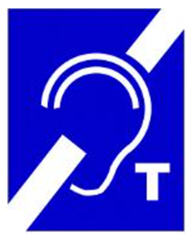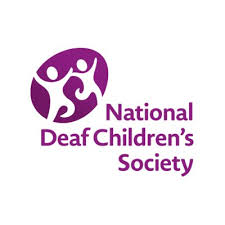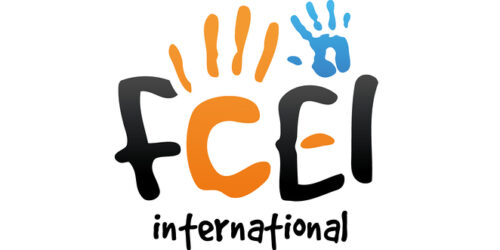6.4. Assistive Listening Technology (ALT) – radio aids and proprietary remote microphone systems
This page was authored by Stuart Whyte.
The recent developments in hearing technologies, such as digital hearing aids, cochlear implants, and bone conduction hearing aids, have provided access to spoken language that previously had never been experienced. However, challenges remain for users of the technology in difficult listening situations. Background noise, distance, and reverberation have a significant impact on the ability to listen in educational, work, and social settings.
Assistive listening technologies (ALTs) overcome many of the challenges present in difficult listening situations and help provide deaf individuals with access to speech in these difficult settings.
Terminology
Radio aids are known by several different terms, including remote microphones (RM) or transmitters, which are an umbrella term for devices that either use a receiver to connect to the transmitter or pair via Bluetooth. Often, radio aids are now referred to as assistive listening devices (ALDs) or assistive listening technologies (ALTs). These can provide a much-needed option for deaf children and young people (CYP) to access speech and sounds.
Purpose/rationale
This broadens the child’s access to speech in a wide range of listening environments and through devices that many of their hearing peers would have daily access to. Connectivity to everyday devices like phones, tablets, laptops, televisions, and hands-free systems can significantly improve the overall quality of life a hearing technology user can expect compared to using their hearing device on its own. Furthermore, the ability to connect to a range of RMs provides enhanced access to speech, improving signal-to-noise ratios (SNR).
The current section will highlight the differences between universal and commercial proprietary ALTs, the different connectivity technologies, and options available for each of them.
The range of options available and the rapid advancements of hearing technology can make the selection process overwhelming for both professionals and families. The wireless options available can be categorised into two types:
- Universal: Universal options of ALT refer to technology or connectivity options that connect to any hearing technology and are not restricted to specific manufacturers’ models however the only current example of this are inductive loop systems which are increasingly restricted to a few ALD models due to reduction in size and increasing electronic complexity of ALDs. A new system: Bluetooth Auracast was realised in December 2023 and will slowly propagate through the mobile phone-TV-Radio- public space arears (please see Auracast section)
- Proprietary: these refer to manufacturer-specific technologies that only work with specific models of primary hearing technologies; the opposite of universal connectivity. Most manufacturers now have these devices including: Cochlear, Starkey, GNResound, Oticon and the Phonak Roger system
Universal
Universal ALTs were traditionally referred to as FM transmitters as the microphone transmitters would carry the signal using FM frequencies. However, in recent years a shift in the transmission protocol has occurred. Higher frequencies (eg 2.4GHz) have now been adopted, which improve clarity and connectivity, overcoming interference. RM transmitters improve the SNR by reducing the distance between the speaker and the microphone. The microphone transmits the speech signal over a wireless channel directly to the receiver (either attached or integrated) to a hearing instrument. This helps to overcome the challenges of distance, reverberation (room echoes), and noise present in the surrounding environment, making the speech signal louder and clearer for the individual wearing the receiver. Improved SNR is essential in ensuring the listener can access speech. The better the SNR the more improved speech comprehension will be. RM transmitters primarily improve access to live speech, mainly one main speaker, for example, a parent speaking to a child, a teacher speaking to the student, etc. Some RMs can be used in group situations and also as a conference mic.
RM technology consists of two components, a transmitter, and a receiver. The RM receiver can be attached to nearly all primary hearing technologies. The RM transmitter is worn by a primary speaker, for example a teacher or a lecturer, and the microphone of the transmitter picks up the speaker’s voice. The sound is converted into an electrical signal and transmitted to the receiver, attached to an individual’s primary hearing technology.
Examples of transmitters
Commonly seen transmitters are the Phonak Roger Touchscreen and Roger On.
Examples of receivers from the Phonak range: the Roger 20 for Cochlear’s Nucleus 7 and Nucleus 8 implants.
RogerDirect™ Roger X licences for integration into implant processors or hearing aids (eg Phonak’s range or Roger X receivers attached via a direct audio input (DAI) ‘shoe’ to other manufacturers’ hearing devices.
RogerDirect™ installs the receivers inside your hearing devices and allows any Roger microphone to stream directly to the ears without the hassle of connecting external devices.
Oticon hearing aids
Oticon Opn Play with FM10 shoe and Roger X receiver.
Oticon Play PX – a DAI shoe is not available to connect to Roger technology. This hearing aid requires an EduMic with a Roger X inserted to stream to the hearing aid. Discussions about any impact on latency using this method are ongoing.
The improved SNR provided by RM technology to individuals using hearing technologies is widely accepted in the literature to improve speech comprehension in challenging listening situations. The effects of room reverberation times on adult hearing aid users have long been shown to have a far greater impact on deaf individuals using a hearing aid compared to normal hearing adults (Finitzo-Hieber and Tillman, 1978; Hawkins and Yacullo, 1984). Similarly, these studies have also shown how reduced SNR has a disproportionately greater effect on hearing aid users compared to normal hearing adults. Furthermore, the optimal distance for speech discrimination is within a metre from the listener (Ross, 1992). In most rooms, at distances of two metres or less the inverse square law of acoustic signals applies. This law dictates for every halving or doubling of distance, the intensity of the acoustic signal would increase or decrease by 6 decibels (dB) respectively (Ross, 1992). It would be expected that the optimal distance would not be maintained during routine daily activities and that the distance between the user of hearing technology and the speaker would regularly increase.
RM technology is widely used in educational settings with school-aged children, often loaned from the local authority through their sensory support service. The speaker, usually the teacher but it can also be teaching assistants (TAs) or peers, wears the transmitter and the child wears the receiver(s) during the course of the school day (one transmitter can be used with several receivers). The use of RM with pre-school children has been highlighted in recent years, and the benefits are being recognised in practice and research (Mulla, 2011; Mulla and McCracken, 2014; Allen et al, 2017; NDCS, 2017; Boddy and Datta, 2018; Curran et al, 2019; Walker et al, 2019; Terry-Short, 2023). Currently, the only universal option for RM technology is only offered by the hearing technology manufacturer Phonak. Phonak’s suite of RM technology options is referred to as Roger technology.
Proprietary
Proprietary ALTs refer to manufacturer-specific technologies that work with their own specific models of hearing technologies. Hearing technologies keep improving and the wireless connectivity options are being upgraded constantly. As these protocols are being upgraded, the channel on which ALT can connect with are limited to work with specific up-to-date technologies. The primary hearing technologies have receivers fully integrated within them, therefore not requiring any intermediary device. The key benefit of proprietary microphones is that the devices are usually a single device that is smaller, easier to use, and often less costly. With the reduced size, this can be an ideal option for pre-school and school-aged children in home settings, especially as the improved SNR will help with language learning for younger children.
Transparency
There is discussion as to whether these devices, especially proprietary, need to be verified electro-acoustically through a test box (See Test Box Section 6.6). At both Oticon and Phonak’s October Conferences (Oticon, 2023 and Phonak, 2023) it was advocated to ensure transparency and to provide comparison curves.
Connectivity
Telecoil
This function offers a universal connectivity option routinely available with most primary hearing technologies. A telecoil is a small, coiled copper wire found inside the hearing instrument, which is used in conjunction with a (hearing/audio-induction/induction/audio-frequency induction) loop system. The telecoil picks up the electromagnetic signals from the loop system streaming it to the hearing device.
The primary hearing technology is placed on the telecoil ‘T’ setting enabling the hearing device to pick up sound coming through a loop system directly. The hearing technology can only pick up sound in rooms where an induction loop has been fitted.
The induction loop is a cable that encloses a particular area and transmits sounds in the form of a magnetic field that can be picked up within the coverage area when hearing aids are switched to the ‘T’ setting; often the loop is connected to an existing microphone and amplifier/public address system.
The coverage area can be as small as an individual’s front room but can also cover areas as large as conference halls. Hearing loop systems are found in many public buildings (banks, churches, and shopping centres), indicated by the blue and white ear symbol. It has been shown to provide great benefit to users of hearing technology (Ross, 2002).
Portable induction loops/neck loops can be worn to provide access to the speaker’s voice. The neck loop is a lightweight cable worn around the neck and can be used with mobile phones and Bluetooth-enabled devices. Similarly, much smaller ‘ear hook’ loop systems have been designed that can be used in place of earphones by transmitting sound directly to the hearing aid via the telecoil ‘T’ program. Although many primary hearing technologies have the loop function or can have them activated, the uptake of the technology is not widespread. Findings from the EHIMA (European Hearing Instrument Manufacturers Association) study (2010) reported that the majority (62%) of hearing aid owners were not aware of what the telecoil was, and only 15% were aware they had a telecoil on their hearing aid and 8% were not sure. The 15% who did have a telecoil setting on their telecoil made most use of the setting when using the telephone (68%) and watching television (59%). Other situations where the telecoil was used were in a places of worship/church (43%) and listening to lectures (47%).
Auracast is set to replace telecoil connectivity, streaming audio output to hearing technologies. According to the Royal National Institute for Deaf People (RNID) this should now be available with newer listening technology. (See Hearing Aid Section 6.1)
Streaming
Proprietary wireless options are now available for nearly every hearing technology manufacturer’s devices (including cochlear implants, bone conduction aids, and hearing aids). These proprietary options enable connectivity to everyday technologies via wireless protocols. This, in most cases, now occurs directly to the hearing device or can be via a device that acts as a hub between the hearing device and the device being connected to (eg a smartphone or tablet).
Compatibility
With more and more developments in technology, with both hearing aids and radio aids it can be difficult to keep up to date with connectivity. The Connevans app (available at the app store Google Play) provides a useful tool to check the connectivity of each hearing aid.
Oticon and Phonak have dedicated webpages that will advise which mobile phones are compatible with their products and apps.
Image Companion App
Image MyPhonakjunior App
Oticon also have a QR code to explore their wireless options.
SMART Board compatibility and connectivity
As with all technology, this is another area that is moving fast. As schools upgrade their current equipment, it is becoming increasingly difficult to advise on the equipment needed to enable ALTs to connect to the interactive white boards (IWB). A splitter cable and an aux lead are not always enough. It can require a TOSLINK or an HDMI box .
Phonak also produces a multimedia hub to enable the child to experience audio from both the teacher and the media being used.
We are currently compiling a guide to connectivity, detailing the make of SMART board, the device to be connected, and any additional equipment needed. We welcome any additional information to add to this document to become a valuable tool for all professionals working with deaf children and their families.
Connecting hearing technology to television and games consoles
Manufacturers have their own devices to connect to televisions and games consoles.
Phonak: TV accessories
Phonak troubleshooting
Oticon TV accessories
It is also possible to use the Bluetooth within the hearing device to connect to some devices including laptops.
Planes
Each airline has its own regulations for Bluetooth use throughout the flight, but the Civil Aviation Authority explains that medical devices, including implants and hearing aids, can be operational due to very low emissions. Other airlines ask for devices to be on flight mode for take-off and landing. Most ALDs can connected to the in-flight entertainment via an audio output cable. Check with the airline before you travel to ensure that you have the right equipment.
Each transmitter has its own user guides that will support with connectivity
Considerations for QToDs:
- If an ALT is being considered, liaise with audiology/implant centres to ensure the hearing device’s compatibility.
- The telecoil (T) function is not activated on the standard default settings of many hearing devices. Therefore, ensure that audiology/the implant centre have activated the telecoil feature.
- Ensure CYP) and their families are aware of their hearing technologies’ app and its features.
- Discuss with the CYP and their family the features of their ALT and its connectivity to educational devices (SMART Boards), television, laptops, mobile phones, games consoles, etc.
- Connevans catalogue
Phonak – HDMI splitter for Smartboard technology
References
Allen, S., Mulla, I., Yen Ng, Z., Archbold, S. and Gregory, M. (2017) Using radio aids with pre-school deaf children. Available at: [Accessed: 21.08.22].
Boddy, C. and Datta, G. (2018) ‘The use of Mini Microphone (MM) as a personal radio system (FM) with young children who are deaf’. Cochlear Implants International. 19(6) pp. 330–337.
Curran, M., Walker, E. A., Roush, P. and Spratford, M. (2019) ‘Using Propensity Score Matching to Address Clinical Questions: The Impact of Remote Microphone Systems on Language Outcomes in Children Who Are Hard of Hearing’. Journal of Speech, Language and Hearing Research. 62 pp. 564–576.
European Hearing Instrument Manufacturers Association (EHIMA) (2010)
Finitzo-Hieber and Tillman (1978)
Hawkins and Yacullo (1984)
Mulla, I. (2011) Pre-school Use of FM Amplification Technology. Doctor of
Philosophy. The University of Manchester.
Mulla, I. and McCracken, W. (2014) ‘Frequency Modulation for Pre-schoolers with Hearing Loss’. Seminars in Hearing. 35(3) pp.206–216. DOI:10.1055/s-0034-1383505
National Deaf Children’s Society (NDCS) (2017) Quality Standards for the use of personal radio aids: Promoting easier listening for deaf children. London: National Deaf Children’s Society.
Oticon (2023)
Phonak (2023)
RNID (2023) Auracast™ – new Bluetooth technology for people with hearing loss. Available at: [Accessed 12.11.23].
Ross (1992)
Ross (2002)
Terry-Short, K. (2023) Informed Decision Making on Assistive Listening Devices in Early Years. Master of Science. University of Hertfordshire. [Accessed 30.10.23].
Walker, E.A., Curran, M., Spratford, M. and Roush, P. (2019) ‘Remote Microphone Systems for Preschool-Age Children who are hard of Hearing: Access and Utilization’. International Journal of Audiology. 58(4) pp. 200–207. Available at:
Auracast: Auracast is set to augment telecoil connectivity, streaming audio output to hearing devices. Released in December 2023 a number of phones and systems are now available and these will slowly expand. It can be added to many existing telecoil/loop systems. Auracast is a broadcast system (i.e. one to many) and is aimed at public spaces, theatre’s etc plus personal use TV streamers etc: please view this PDF link to Mark-Laureyns’ presentation ‘Auracast-Where are we now?‘
Unlike telecoil it can have many channels ie multiple languages at an airport, selected via an Assistant” which currently may be an app or QR code
Devices compliant and tested to the Bluetooth Auracast specification (these carry the Bluetooth Logo) must have the 16-24KHz channels which are suitable for the majority of Auracast enabled ALDs, the higher quality channels will not be audible to most but not all hearing aids.
For further information visit https://www.bluetooth.com/
Next pages in this section
6.7 Other hearing technologies
Previous pages in this section
6.1 Hearing aids
6.2 Bone conduction hearing devices (BCHD)
Other sections
- Section 1 Anatomy and physiology of the ear
- Section 2 Aetiology and types of deafness
- Section 3 Auditory perception and hearing testing
- Section 4 Acoustics and physics of sound
- Section 5 Listening skills and functional hearing





